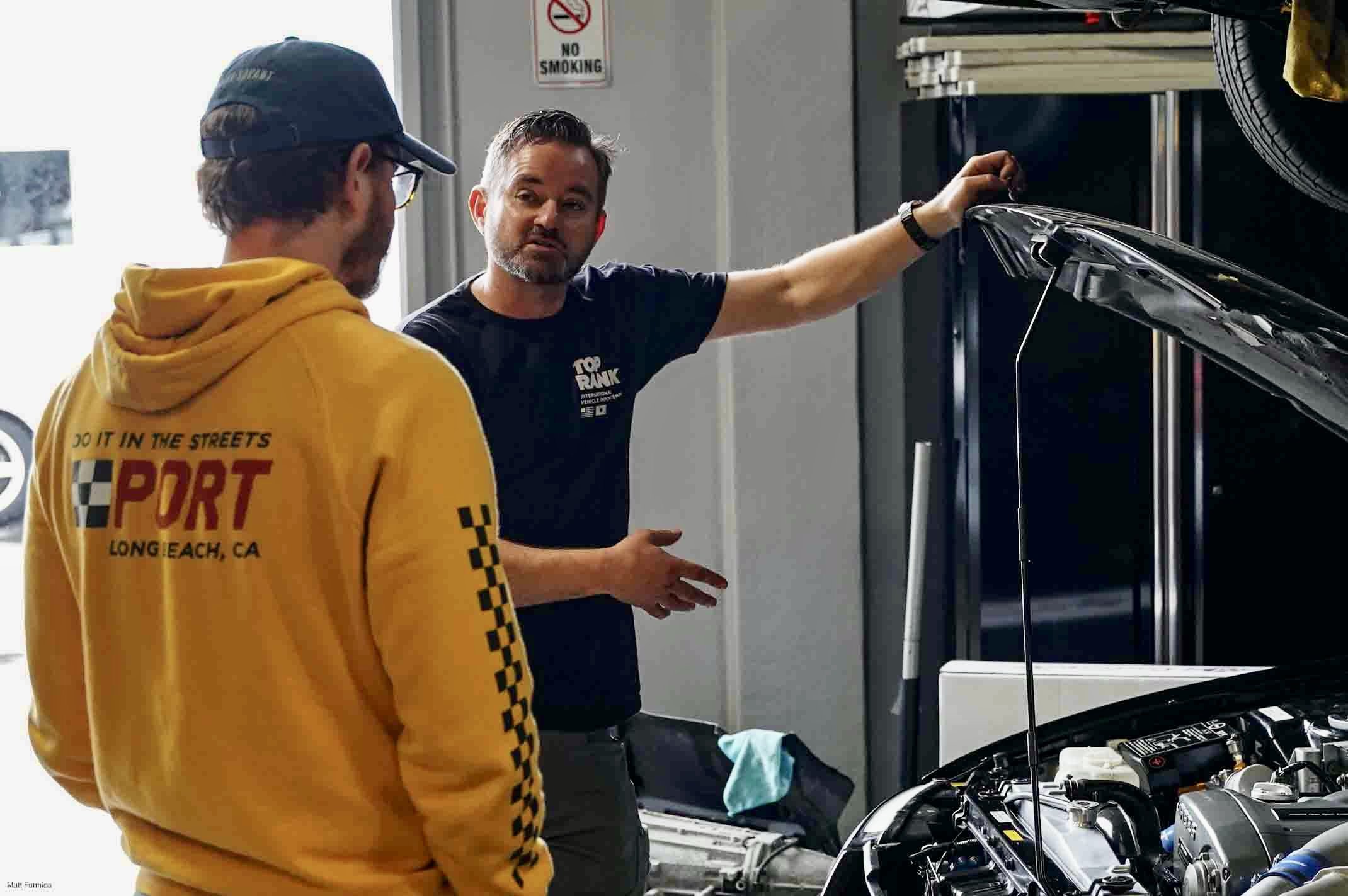
Q&A with Cult of GT-R Author Ryan K. ZumMallen
In Cult of GT-R, the newest release from Carrara Media, author Ryan ZumMallen wades into the murky automotive underworld to uncover the true story of the Nissan Skyline GT-R — the most notorious and controversial sports car in modern history. No other vehicle has attracted so much negative attention, or so many colorful characters, and risen to such hallowed heights in the eyes of enthusiasts and collectors. Cult of GT-R is the story of how and why it all happened. In the Q&A below, ZumMallen explains the process of telling it.
A rare Nissan R34 Skyline GT-R M-Spec Nür at Toprank Importers in Cypress, Calif. Photo by Ryan ZumMallen.
WhAT MADE YOU WANT to pursue THE STORY OF THE NISSAN SKYLINE GT-R?
Most everyone in the auto world knows the Skyline GT-R is the biggest hot-button issue in car culture over the past 30-plus years. But much of that story is mired in rumors and speculation, and very few people actually know what happened and who was involved. I thought about the authors in the nonfiction genre whom I truly admire, Michael Lewis with Moneyball, Susan Orlean with The Orchid Thief, David Grann with Killers of the Flower Moon and others, and asked myself what they would do if presented with the Skyline saga. That sounded like a pretty fantastic formula to me. I figured if anyone was going to do it, it might as well be me.
Sean Morris, director at Toprank Importers, shows ‘Cult of GT-R’ author Ryan ZumMallen under the hood of an R33 Skyline GT-R. Photo by Matt Formica.
How did you go about the process of getting started?
There’s really only one place to start with the story of Skylines in the U.S., and that’s with Sean Morris. He’s been twisted up in this world nearly since the beginning, and especially in the past 20 years has played a major role in navigating, and also shaping the regulations as we know them today. I started by conducting marathon interviews with him, popping into his shop whenever I had a free couple of hours, and just generally observing. That was always my home base — learning from him exactly why Skylines are so difficult to import, how they actually get here one way or another, and what would compel someone to go to such great lengths to get one. Sean’s in the middle of all of it. It also helps that something dramatic or fascinating is always happening around him.
A pair of R34 Skyline GT-R at the Nissan Heritage Center in Zama, Japan. Photo by Ryan ZumMallen.
What were the important pieces that needed to be included?
Certainly, I needed to outline the frenzy that occurred through the early 2000s when people were clamoring to bring Skyline GT-Rs into the country, and facing all sorts of legal hurdles. So it was only right to delve into those obstacles, and why they exist in the first place — in some cases, it’s not what’s widely known or considered as truth by the public. And then there was the pop culture phenomenon, fueled by movies and video games that had young Americans across the country dreaming of living a Japanese lifestyle. Plus the car itself and what made it so special, and it’s earlier versions that are legends in their own right. Finally, you can’t talk about the success of Nissan without pointing to the ways that it helped build Japan back into a superpower after World War II. Japan and the U.S. have had a complicated relationship going back nearly 200 years. It can be hard to believe events from the 1850s led directly to our fascination with their cars, but that’s exactly what happened.
A heavily-modified R32 Skyline GT-R at the Daikoku Parking Area in Yokohama, Japan. Photo by Ryan ZumMallen.
Why hadn’t THE SKYLINE GT-R story been told in full before?
A lot of it is mired in the shadows, or based on rumors and assumptions. A lot of speculation has been taken as fact over the years. Waiting through all of that B.S. to find out what’s real and what’s not is a Herculean task. Some people know two or three or four parts of it, but no one had ever really put the full puzzle together at once. As an automotive journalist, we aren’t conditioned to do this type of research and reporting. It’s much easier to talk about car culture from an industry perspective. Getting the people side of the story takes legwork, phone calls, trust building and patience. This is an automotive story, but it’s hard-nosed journalism first. I did the best I could with the time I had, but every door I opened led to ten more doors. That’s never happened to this degree in my reporting before. This was a nonstop endeavor for me for nine months, and there’s still a whole lot more to tell.
What was the most surprising thing you found in your research?
There’s a lot in this book that shows what really went down, from the person who finally ended MotoRex to the exact methods some people used to smuggle cars into the country. I also remain shocked at how little we are taught in school about the U.S. Navy‘s role in opening Japan to the outside world. But more than anything I keep coming back to the story of Suzanne Zelonis, and how her death quite directly led to the 25-year importing law as we know it. It’s a shame that so many people got in the middle of what was truly a tragedy, and worked very hard to exert force on the scales of justice. Then, once the people in power had their way, her story was all but erased from history. If it wasn’t for some dogged reporting at the time by local newspapers, I would’ve had no way of finding this out.
A rare R33 Skyline GT-R Nismo 400R, one of only 44 ever made, during an evening cruise organized by Toprank Importers. Photo by Ryan ZumMallen.
What changed about the way you perceive the SKYLINE GT-R from beginning to end?
I understand more clearly now why people were willing to go to the lengths they did in order to have a Skyline GT-R of their own. I wouldn’t say it’s not because of the car itself, because the fact that the car is such an all-star performer certainly enhances its legend. But there’s a deeper connection to a particular era, a particular style and side of car culture, and to Japan, in general, that is otherwise unobtainable. The way those things existed at one time is never coming back. But this car is a conduit to all of it. By owning a Skyline GT-R, driving it around or even storing it in your garage and staring at it every day, you can carry a little piece of those eras around with you as a time capsule. At all times.
GT-R program manager Hiroshi Tamura steers his personal R32 Skyline GT-R at the Nissan Technical Center in Atsugi, Japan. Photo by Ryan ZumMallen.
What memory will you most take away from this experience?
My time with Hiroshi Tamara was especially memorable, because I got to see and understand who he is as a person. Not as a Nissan employee, or as a “GT-R father,” or as part of his infamous past. But as a human being, who cares about family, food, music and passion for life. These are the things that drive all of us, and the amazing thing to me is not that he’s channeled them all into building an incredible car, though he has. The amazing thing about him to me is how he lives his life, his way, to the fullest, at all times. I consider it an honor to have been deemed worthy to see that side of him.
Cult of GT-R is available for preorder now as a standard version paperback, the limited Wangan Edition paperback, or as a digital eBook.






